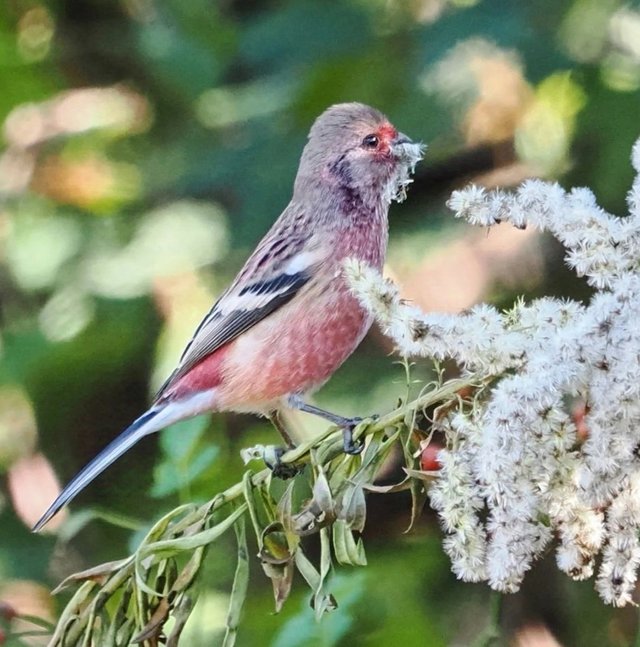So Cute Pallas's Rosefinch Bird
Pallas's Rosefinch: A Jewel of the Avian World
The natural world is brimming with wonders, but few are as enchanting as the Pallas's rosefinch. This striking bird, named after the German zoologist Peter Simon Pallas, is a member of the finch family and captivates birdwatchers and naturalists with its vibrant plumage, melodic song, and fascinating behaviors. Found primarily in Asia's temperate and boreal regions, Pallas's rosefinch is a symbol of the beauty and complexity of nature.
Appearance
The Pallas's rosefinch is a visual delight, especially the males. Adult males boast a bright rose-pink plumage with a white belly, contrasting with brownish streaks on their wings and back. Their striking colors make them stand out against the often-muted tones of their habitat, particularly in the winter months when snow blankets their environment. Females and juveniles are more subtly adorned, with a predominantly brownish appearance, streaked with lighter tones, providing effective camouflage against predators.
This sexual dimorphism not only makes the males more attractive to potential mates but also helps the less conspicuous females stay safe during nesting.
Habitat and Range
Pallas's rosefinch inhabits the forests, shrublands, and alpine meadows of northeastern Asia. Its range extends from parts of Siberia and Mongolia to northeastern China, Korea, and Japan. These birds are well-adapted to colder climates and are often found at high altitudes, particularly in the summer breeding season.
During the winter months, they may migrate to lower elevations or slightly more temperate areas in search of food. Their seasonal movements, however, are relatively short compared to many other migratory birds, reflecting their resilience to colder conditions.
Diet and Feeding Habits
Pallas's rosefinches are primarily granivorous, feeding on seeds from grasses, shrubs, and trees. They also consume berries and small fruits, particularly during the breeding season when energy demands are higher. Occasionally, they supplement their diet with insects, which provide essential proteins.




Thanks For Reading
Device Information
| Device | cannon eos 600D |
|---|---|
| Lens | 55-250 zoom leans |
| Location | Myanmar |
